U.S. Department of Transportation
Federal Highway Administration
1200 New Jersey Avenue, SE
Washington, DC 20590
202-366-4000
FHWA Resource Center
Office of Innovation Implementation
Click here for the PDF Version of the Environmental Quarterly
To view PDF files, you need the Acrobat® Reader®
The Environmental Quarterly
Volume 5, Issue 2
Spring 2009
LETTER FROM THE EDITOR
Dear Environmental Colleague,
Welcome to the Spring Edition of the Environmental Quarterly, the second for me as Editor-in-Chief. As you might have guessed, I’m still trying to get my feet on the ground in my new position as the Environment Technical Services Team Manager and in living somewhere other than DC. Things are going very well. One of my goals is to figure out the best use of this space for future issues of the Newsletter. My goal and desire is be thought-provoking, provide some perspective and/or be entertaining in 130 words or less. It’s a challenge I’m looking forward to. There are a lot of very interesting things going on in the world of NEPA, project development, transportation and the environment. We will try to capture the best of them.
Until next time, we hope you enjoy in this edition of the Environmental Quarterly and as always, if you have comments about a story or story ideas, please let us know.
Sincerely, Lamar Smith
Environment Technical Service Team Manager &
Editor–in-Chief
Phone: (720) 963-3210
E-mail: lamar.smith@dot.gov
INSIDE
• FAQs About NEPA Reevaluation
• Cultural Heritage Manual to Aid Tribal Consultation Efforts
• MoDOT’s Eagle’s Nest
• NHI Seminar: Navigating the NEPA Maze
• New Effective Communications in Public Involvement Course
FAQs about NEPA reevaluations
By Lamar Smith & Deborah Suciu-Smith, FHWA Resource Center
One likely consequence of the American Reinvestment and Recovery Act is an increased need to reevaluate previously approved or ongoing NEPA documents and decisions for federal-aid transportation projects. These may be for projects ‘shelved’ due to lack of funding or simply put aside due to changes in statewide or regional priorities. Notwithstanding the Recovery Act, reevaluations of NEPA decisions are an important part of the FHWA/FTA responsibilities prescribed in 23 CFR 771. A reevaluation can be a simple task or a more substantive challenge. In our never-ending effort to provide timely and meaningful technical assistance, the Resource Center Environment Team with the assistance of the Headquarter’s Office of Project Development and Environmental Review have developed a list of frequently-asked-questions. Due to the number of questions, responses to only the top seven are presented in this issue.
WHAT IS THE PURPOSE OF A REEVALUATION?
Reevaluations should be thought of as a continuation of the NEPA project development process and are necessary at certain key points in the overall process to establish whether or not the NEPA document, determination or final project decision remains valid for the subsequent federal action. During a reevaluation, attention is given to determining what changes have occurred in the project and the study including changes in the design or scope of a project, new or modified laws and regulations, circumstances or project area changes or new information in general. The finding or conclusion of a reevaluation is that the NEPA decision or documentation is valid or that additional analysis is required. A reevaluation provides evidence for the FHWA in determining whether or not the preparation of a new CE, EA or supplemental EIS is necessary in order to advance the project to the next stage. [23 CFR § 771.129(c)]
WHEN SHOULD A REEVALUATION BE CONDUCTED?
The reevaluation of an approved NEPA document or decision is required prior to the request for FHWA action (i.e. final design, ROW, PS&E), generally when there has been a time lag or changes related to the study have occurred between the previous NEPA approval and the request for action.
Any project with an approved NEPA decision will be reevaluated prior to the request for FHWA action or approval to advance the project (i.e. final design, ROW, PS&E). The reevaluation will generally be concluded through consultation between the project sponsor (State DOT) and the FHWA regarding changes and other facts of the project, study and decision. This reevaluation takes place after the CE, FONSI, EIS or ROD has been approved and prior to advancement to the next project stage. Any change to the proposed project, new circumstances, new information (environmental, traffic, standards, etc.), final design or scope modifications, new or revised environmental laws, regulations, and/or policies which have occurred since the CE, FONSI or EIS/ROD was signed are considered and should be discussed. The project files must document that consultation occurred and what or how changes occurred and include an assessment of the validity of the original NEPA decision. A written reevaluation may or may not be necessary as determined through the consultation between the FHWA and project sponsor.
IF MY PROJECT HAS NOT CHANGED, DO I NEED TO CONDUCT A REEVALUATION?
Before requesting FHWA approval for final design, ROW or construction activities, the project sponsor must consult with the FHWA to determine whether the original NEPA decision remains valid. Many factors are considered including, but not limited to changes in the project scope, laws, study area conditions, and local, state or national priorities. The amount of time a study has been idle or complete is also an important consideration.
IS A REEVALUATION PART OF THE NEPA PROCESS?
No, reevaluations are not required under the National Environmental Policy Act (42 USC 4321) or Council on Environmental Quality (CEQ) Regulations (40 CFR 1500-1508). They are, however, required by the FHWA/FTA regulations, (23 CFR 771.129) and have been upheld in court as an appropriate mechanism for determining whether or not a supplemental EIS is necessary.
COULD A REEVALUATION SUBSTITUTE FOR A NEPA DOCUMENT (i.e. supplemental EIS)?
The purpose of a reevaluation is to determine the validity of previous NEPA documents, decisions, or determinations. A reevaluation is the mechanism to determine and document (generally in the project file) whether or not the NEPA decision remains valid for the requested action or if additional analysis and/or documentation is necessary.
WHY DO I HAVE TO PREPARE A WRITTEN REEVALUATION?
As already mentioned, reevaluations are a continuation of the project development process and can be concluded with consultation or in writing. Consultation is generally adequate for most projects before the project sponsor requests action or approval. The required consultation is generally between the project sponsor and the FHWA Division office. It is important to remember that all reevaluations (consultations and written) must be documented in the project file.
A “written reevaluation" is a more formal process of documenting the reevaluation of projects with significant impacts that require the preparation of an EIS. A written reevaluation must be prepared when a final EIS is not submitted to FHWA for approval within 3 years from the date of the draft EIS circulation; and are also necessary if major steps to advance the project have not occurred within 3 years after approval of the final EIS, supplemental EIS or the last major approval or grant related to the project.
For any project completed and approved with a ROD, FONSI or CE, a reevaluation may need to be “written”. This necessity is determined through consultation between the FHWA and the project sponsor. Factors to consider when determining the necessity of a written reevaluation may include (but are not limited to): the type and degree of public controversy, possibility or reality of litigation, and the original and anticipated types of environmental resources and project impacts.
COULD A REEVALUATION BE PERFORMED ON JUST THE 1ST PHASE OF CONSTRUCTION OF A PROJECT?
Reevaluations are intended to encompass the same project limits as the original environmental document. The focus of the reevaluation is on determining the validity of the NEPA document or project decision with respect to the current phase of the project. Consider it a snapshot in time recognizing what has occurred on the project to date (ROW, 1st construction section, etc), what is imminent (2nd construction phase, etc.) and what or how the changes in the project are affected by or will affect the current or future steps.
There are many nuances to reevaluations that can be discussed during the required consultation and reevaluation preparation. Some state DOTs have implemented their own requirements for documenting reevaluations that must be considered when determining when or how to undertake a reevaluation. The role of the Division office in consulting and determining the need for a consultative or written reevaluation is essential and documentation of that participation is likewise important.
Editor’s Note: This space is not nearly sufficient to adequately cover this topic. We are planning and anticipate at least one more round of questions and answers in the next issue. If you have questions that we have not addressed and would like to see included, please forward them to deborah.suciu.smith@dot.gov or your favorite Resource Center - Environmental Team representative.
The regulations and guidance related to reevaluations are provided below.)
References: 23 CFR § 771.129 and § 771.130 and FHWA Technical Advisory T6640.8A
Delegation of Authority, FHWA Order M 1100.1, Part I, April 12, 1990.
Chapter 5, Federal-aid, 23. Environment.
Southern Region Air Quality Conference Coming This Summer
STAQS 2009 to be held in Jacksonville, FL, August 25-27
By Michael Roberts, FHWA Resource Center
The Federal Highway Administration (FHWA) and the U.S. Environmental Protection Agency (EPA) are sponsoring the Southern Transportation and Air Quality Summit (STAQS) 2009 this summer in Jacksonville, FL. STAQS will take place August 25-27 at the Hyatt Regency Jacksonville-Riverfront hotel. Don’t miss this opportunity to interact with other transportation and air quality professionals.
STAQS 2009 will bring together stakeholders from the fields of transportation and air quality to discuss the current and upcoming regulatory environment, new technologies and current practices. The conference agenda is geared toward practitioners in the southern states involved with public agencies at all levels. A host of speakers on the national and regional levels will present on key topics, best practices and latest information vital to transportation, planning, and air quality professionals. Topics will include mobile source air toxics, the MOVES model, climate change, transportation conformity, interagency consultation, and more.
Those encouraged to attend include transportation and air quality staff at the Federal, State, and local government levels, including FHWA, EPA, Federal Transit Administration, State DOTs, State air and environmental agencies, metropolitan planning organizations, transit agencies, city and county agencies. Consultants, academia and others involved in the transportation and air quality arenas are also urged to attend.
The Hyatt Regency Jacksonville-Riverfront is located in the heart of the downtown business, entertainment and sports districts, adjacent to the Jacksonville Landing and Times-Union Center for the Performing Arts. The hotel is also close to Jacksonville beaches and shopping.
Conference co-sponsors include the Metro4-Sesarm and North Florida Transportation Planning Organization.
To register for the conference and obtain more information, visit the STAQS information page. There is a registration fee of $100.00.
For additional information, contact one of the following:
Mike Roberts at 404.562-3928 or Michael.Roberts@dot.gov (FHWA)
Dianna Smith at (404) 562- 9207 or Smith.Dianna@epa.gov (EPA Region 4)
Jeffrey Riley at (214) 665-8542 or Riley.Jeffrey@epamail.epa.gov (EPA Region 6)
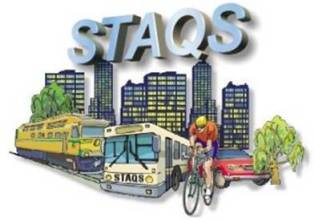
Caption: Logo for the Southern Transportation and Air Quality Summit.
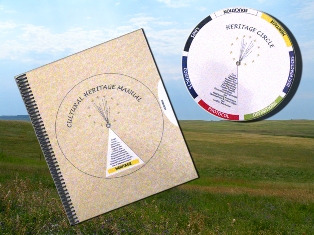
Caption: Image of the Cultural Heritage Manual and the Heritage Circle reference tool.
North Dakota Department of Transportation Develops Cultural Heritage Manual to Aid Tribal Consultation Efforts
By Stephanie M. Stoermer, FHWA Resource Center
The North Dakota Department of Transportation (NDDOT) recently completed the Cultural Heritage Manual—a practical and educational work intended to help both Indians and non-Indians with cultural heritage issues and to facilitate timely tribal consultation. The completion of the manual fulfills one of the goals of the North Dakota Section 106 Programmatic Agreement for Tribal Consultation (PA).
Kent Good (Kent N. Good & Associates); Curley Youpee; (Ft. Peck Tribes Cultural Resource Director); Tim Mentz, Sr. (Standing Rock Sioux Tribe); Jeani Borchert, (NDDOT Tribal Liaison); Conrad Fisher (Northern Cheyenne Tribal Historic Preservation Officer); and Dennis Gill (Wahpekute Dakotah Band) developed the product of several years of thoughtful collaboration, the manual. Tribal representatives from North Dakota Tribal Consultation Committee (TCC), the North Dakota FHWA Division Office and the FHWA Resource Center also contributed to the effort.
The term “cultural heritage” has been applied in different contexts and has acquired different meanings over the years. However, as United Nations Educational Scientific and Cultural Organization (UNESCO) acknowledges: “Cultural heritage is not limited to material manifestations, such as monuments and objects that have been preserved over time. This notion also encompasses living expressions and the traditions that countless groups and communities worldwide have inherited from their ancestors and transmit to their descendants, in most cases orally.” (UNESCO, 2002).
Unfortunately, in the not-so-recent past, the fieldwork, analysis, and written interpretation of indigenous cultural sites were often conducted without meaningful consideration of traditional cultural, social, and spiritual views. Native American concerns and sensitivities were frequently either overlooked or completely ignored. Failure to address cultural heritage concerns impeded—and in many cases, prevented—meaningful tribal consultation. The failure on the part of investigators to consider cultural matters from a tribal perspective was compounded when agency officials responsible for tribal consultation had little or no knowledge of Native American values or the necessary grounding in cultural sensitivity.
When the National Historic Preservation Act (NHPA) was amended in 1992, expanded legal requirements demanded that Federal agencies consult with Indian Tribes on undertakings that could affect properties of traditional religious and cultural significance on or off Tribal lands. Since that time, much progress has been made in providing consultation guidance that addresses tribal concerns as well as agency concerns. The Advisory Council on Historic Preservation’s (ACHP) recently released “Consultation with Indian Tribes in the Section 106 Review Process: A Handbook” (2008) is an excellent example of such guidance.
While guidance on the tribal consultation process is now readily available, locating relevant guidance that provides first-person tribal perspectives on cultural heritage issues can be problematic. The Cultural Heritage Manual not only provides such tribal perspectives--it seeks to facilitate non-judgmental exchange of knowledge and to accommodate the development of a solid framework for consultation.
The manual is divided into seven sections: Laws, Heritage, Education, Contacts, Protocols, Definitions, and Best Practices. A unique visual aid—called the Heritage Wheel--accompanies the Cultural Heritage Manual. Intended as quick reference to various topics, the Heritage Wheel is color-coded in order to assist the user with locating critical information at a glance as well as identifying interrelated topics. To provide a more permanent index, a modified version of the Heritage Wheel is also incorporated as a part of the manual cover.
Since the Cultural Heritage Manual is a tool to be used to expedite consultation, it is designed to be modified as needed. Although the primary audience for the manual consists of the signatories of the PA (NDDOT, FHWA, the respective tribes) as well as consultants, it is anticipated that other State DOTs and FHWA Divisions will be able to draw upon the key principles of tribal consultation and cultural sensitivity embodied in the Cultural Heritage Manual to foster best practices.
For more information about the North Dakota Cultural Heritage Manual, please contact:
Jeani Borchert
Cultural Resource Section
North Dakota Department of Transportation
(701) 328-4378
jborcher@nd.gov
For information regarding tribal consultation workshops and related training, please contact:
Stephanie Stoermer
FHWA Resource Center, Environment Technical Service Team
(720) 963-3218
Stephanie.Stoermer@dot.gov
JUNE: INVASIVE SPECIES AWARENESS MONTH
What is an Invasive Species?
By Brian Smith, FHWA Resource Center
Non-native species are species that are not indigenous to an area, are introduced to an ecosystem, and they have the potential to cause damage. When a non-native species harms the environment, they are called invasive species. Any species that is introduced from another place is a non-native species, but only once the species becomes harmful to the ecosystem can it be called invasive.
Noxious weeds are plant species that have been designated by state or national agricultural authorities as plants that are injurious to agricultural and/or horticultural crops and/or humans and livestock. State Noxious Weed Lists can be found at the US Department of Agriculture’s web site. Noxious Weed Lists do contain some native plant species. The terms alien and exotic are frequently used terms that refer to plants that were brought into the area by people, either on purpose or by accident (i.e., not native). Alien or exotic plants are not necessarily invasive or noxious though.
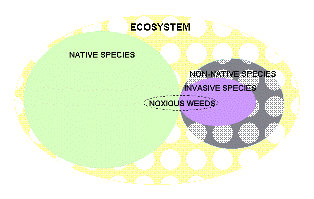
Caption: Graphic representation of native and non-native versus invasive species in an ecosystem. Both native species and non-native species are shown as sub-sets of the ecosystem. Invasive species are shown as a subset of non-native species. Noxious weeds are a subset of both native species and invasive species – which illustrates that the State Noxious Weed Lists contain some native species, too. (Graphic Modified from: Alien Invaders.
Many state DOTs have been pursuing native seed mixes for many years. However, invasive species can thrive on the ammonia nutrient produced by indigenous legumes in DOT native seed mixes. Nutrients also move into DOT right-of-ways via agricultural drainage making invasive species extremely aggressive and a great hindrance to native vegetation establishment. Key components to invasive species control plans and programs are prevention, early detection, rapid response, and control and management. Executive Order 13112 addresses the prevention of the introduction of invasive species. This Executive Order and FHWA guidance on invasive species can be found at https://www.fhwa.dot.gov/environment/inv_guid.htm.
Can you identify an invasive species from your region in the photos below? Find the answers at this website.
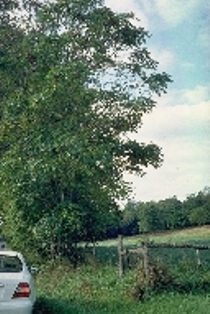 |
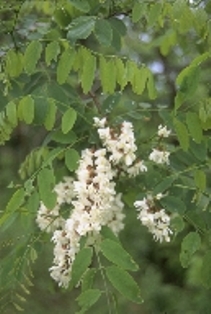 |
 |
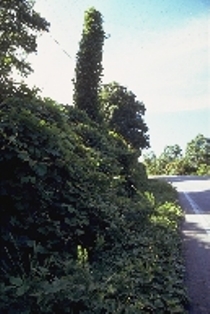 |
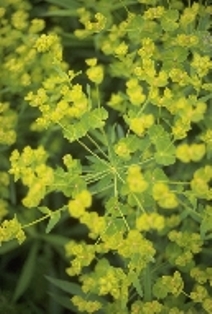 |
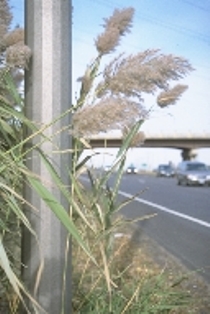 |
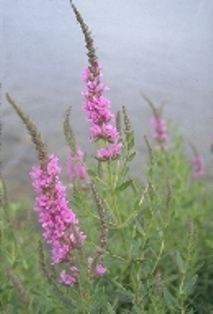 |
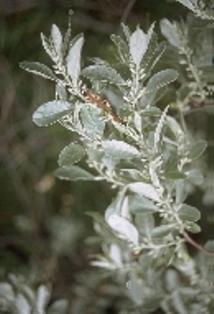 |
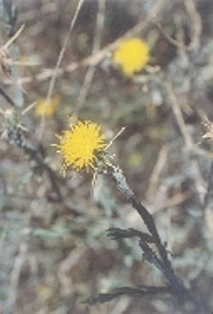 |
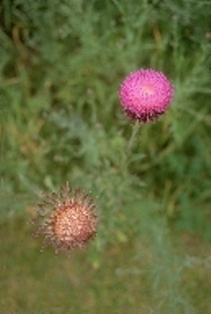 |
Caption: Matrix of photos of a variety of ten roadside invasives to watch for.
MoDOT’s Eagle’s Nest Relocation
By Peggy Casey, FHWA Missouri Division Office
Last March, employees of the Missouri Department of Transportation (MoDOT) discovered a bald eagle nest along the proposed alignment for the new U.S. Route 54 Expressway in Camden and Miller Counties, Missouri, near Lake of the Ozarks. Removal of the nest was necessary for the project to proceed and helped to protect the nesting pair from disturbance.
Since the bald eagle was removed from the endangered species list in 2007, Section 7 consultation under the Endangered Species Act was not necessary. However, the bald eagle is still protected under the Migratory Bird Treaty Act (MBTA) and the Bald and Gold Eagle Protection Act (BGEPA). Delisting meant that the bald eagle had recovered to the point that it no longer needed the protection of the Endangered Species Act. This was a good thing for the bald eagle, but a bad thing for a highway project that needs to take a bald eagle nest. Section 7 consultation under the Endangered Species Act has a process for takes, but no process for bald eagle takes has been established under the MBTA or the BGEPA.
A meeting was held at the U.S. Fish and Wildlife Service field office in Columbia on May 1st. Representatives from USFWS, the Missouri Department of Conservation (MDC), MoDOT, and the FHWA Missouri Division Office attended. It was determined that the best course of action would be to wait until the eagles left the nest for the season and then remove it before the eagles returned in December to start the next season’s nesting process.
“Eagles will reuse the same nest, but they can be very sensitive to disturbance from noise and construction activity,” said Bree McMurray, senior environmental specialist for MoDOT. “In this instance, private development near the proposed highway alignment meant that even if MoDOT changed the highway location, there could still be a disruption that might cause the eagles to abandon their nest. By removing the existing nest, the eagles can return to the lake area, but they will find a new location and build a new nest away from the construction.”
The agencies worked together to secure a permit that allowed the careful removal of the nest for scientific study and educational purposes. MoDOT agreed to perform DNA testing from the nest and test new nests in the area to check for possible relocation of the eagles.
The nest is being stored in a secure location while MoDOT works with MDC to prepare the nest for display and to determine the permanent location of the display.
The US 54 Expressway project is proceeding on schedule, thanks to the hard work and cooperation of the various agencies involved.
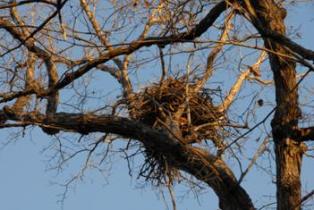
Caption: Photo of eagle’s nest in the branches of a tree.
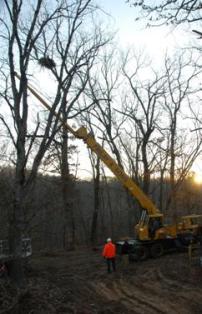
Caption: Photo of a crane reaching toward the eagle’s nest in the tree.
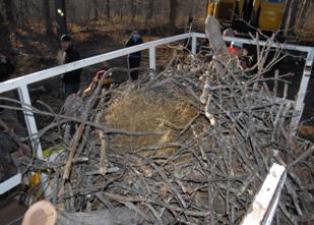
Caption: Photo of eagle’s next in a trailer ready for transport.
Oregon DOT hosts first session of NHI Advanced Project Development Seminar: Navigating the NEPA Maze
By Mary Ann Rondinella, FHWA Resource Center
The Oregon DOT hosted the first session of the newly launched National Highway Institute (NHI) Course 142055, Advanced Project Development Seminar (aka “Advanced NEPA Seminar”) in Portland on March 10-12, 2009. This course builds on the principles introduced in the online Introduction to NEPA course (NHI 142052) and the three-day, instructor-led NEPA and Transportation Decision Making Course (NHI 142005).
The new seminar is intended for experienced NEPA practitioners. The course outcomes include: the ability to more effectively manage and deliver projects and programs; apply principles of environmental stewardship and streamlining; identify strategies to manage controversial projects; and build a defensible administrative record. The highly interactive seminar encourages participants to share and apply their experiences in resolving complex environmental issues during project development.
The seminar also gives participants the opportunity to discuss emerging issues. Some of the topics selected by the participants included linking planning and NEPA, climate change, and indirect and cumulative effects analysis.
For more information about NHI and its courses, visit the NHI web site.
End of article 6.
Start of article 7.
New NHI Course Helps Public Involvement Practitioners Become Better Communicators
By Steve Moler, FHWA Resource Center
The job of today’s transportation official has never been more challenging. Much of what they do in their daily work involves solving problems, whether it’s enhancing the traffic flow of a highway bottleneck, improving the safety of an intersection, or preserving the environmental integrity of wetlands near a freeway.
In solving these problems transportation officials have to be more versatile than ever before. For example, Federal laws, such as the National Environmental Policy Act, require transportation officials on certain projects to conduct public involvement, the process of receiving public input about the project’s social, economic and environmental impacts. Through the public involvement process, transportation officials have to listen and talk to various stakeholders, organize and hold public meetings, disseminate information, give presentations, deal with emotionally charged issues, and sometimes even talk to the news media. All of these activities require good communications skills.
To help transportation officials acquire the communications skills and techniques needed to succeed in transportation planning and public involvement, the National Highway Institute (NHI) is now offering the course Effective Communications in Public Involvement (NHI Course No. 142059). This six-hour course is delivered entirely via the Internet, so participants can complete the course from the comfort of their own office or home over several days.
Effective Communications in Public Involvement teaches participants how to overcome the frustrations and loss of control that may occur during public meetings because of hostilities, grandstanding and gamesmanship. The course explores how and why the public develops entrenched and sometimes inflexible, emotionally charged positions, traces the root causes of hostilities and anger in public involvement, and teaches strategies to help you and your organization gain trust and credibility with the public.
The course also covers how to:
• Incorporate an effective communications plan into the public involvement program
• Prepare for and carry out all types of public meetings
• Handle hostile groups and individuals
• Give effective presentations at public meetings
• Complete proper meeting follow up
The first module is delivered via instructor-led Web-conference training (WCT) and lasts about 90 minutes. The instructor provides theories and insights into the social and psychological processes involved in individual and group decision-making. The instructor explains how people make decisions that best fulfill their values, meet their needs and allow them to pursue their interests. Failure to consider the public’s values, interests and needs (abbreviated VIN) in a project can lead to anger and hostilities – and ultimately a loss of trust and credibility. The more transportation officials understand why public involvement can become so emotionally charged, the better they can communicate with the public.
The first module provides overviews of Hans and Annemarie Bleiker’s Systematic Development of Informed Consent (SDIC) and the Federal Highway Administration’s Triangle of Satisfaction, both of which focus on solving problems through consideration of your public’s values and interests rather than their entrenched and often emotionally charged positions.
The course shifts to self-paced Web-based training (WBT) for the next four modules, which last about 30 minutes each and can be completed over five business days. Modules 2 and 3 take learners through a step-by-step process of how to communicate with various stakeholders, interested groups and individuals through their VIN. Participants learn how to identify project stakeholders, initiate contact with them through various communications techniques, define the emotionally charged issues, and implement a sound communications strategic plan that leads to success. This entire process emphasizes the importance of identifying and communicating effectively with potential project opponents.
Modules 4 and 5 guide the learner through a series of tips and exercises on what can be done before, during and after a public meeting to ensure success. A Public Meeting Survival Guide takes participants through a 10-step process of how to plan the public meeting. The guide explains how to:
• Establish goals and objectives
• Identify target audiences
• Determine appropriate formats
• Develop written agendas
• Define roles and responsibilities,
• Determine how to receive audience feedback
• Close the meeting
Modules 4 and 5 continue with tips on how to prepare for the public meeting itself, including establishing operating norms and ground rules, selecting various roles and responsibilities, developing main messages, crafting a written agenda, selecting an appropriate meeting site, identifying unexpected problems, and anticipating the audience’s mood. Next, the lesson shifts to providing guidance on what can be done during the public meeting to enhance communications, including tips on how to give an effective presentation and deal with hostile groups and individuals.
The sixth and final module shifts back to instructor-led WCT. The first 30 minutes or so are dedicated to class discussion and questions and answers about the previous four self-paced WBT modules. The remainder of Module 6 consists of a class exercise in which small teams of class participants take turns answering hostile questions from the instructor and other classmates regarding a hypothetical project. Team members listen to a hostile question, and then discuss among themselves how to respond constructively to the question using interest-based problem solving techniques learned in Module 5. Module 6 concludes with tips on what to do after the public meeting, including following up with public meeting participants and news reporters, as well as determining whether to hold a post-meeting conference to assess lessons learned.
To obtain more information or register for Effective Communications in Public Involvement, visit the NHI Web site.
What is Transportation Conformity?
Since February 2009, over 400 practitioners from across the country have participated in FHWA’s What is Transportation Conformity? webinar. Geared to those new to the conformity regulations, participants have included people with varying levels of involvement with the issue – from those with peripheral exposure to conformity, such as safety engineers, to those who expect to have additional conformity responsibilities in the future. Attendees have said it is "an excellent introductory class," "just the right level of detail," and that "the course was really helpful."
FHWA plans to continue to offer live sessions of this free webinar to meet interest levels and also plans to launch an on-demand version. The webinar is open to FHWA employees and agency partners. Please look for future sessions on the NHI web conferencing Event Calendar at http://www.nhi.fhwa.dot.gov/resources/webconference/eventcalendar.aspx
FHWA would like your feedback on the Environmental Review Toolkit website!
Please share your thoughts with us by taking our brief survey located on the FHWA Environmental Review Toolkit Homepage. It is designed to tell FHWA how users, like you, use the Environmental Review Toolkit, and how the website could be improved.
Additional questions or comments can also be sent to the website administrator at julianne.schwarzer@dot.gov.
What’s Going On?
Here are a few of the upcoming events of interest to the environmental community:
July 2009
July 13-17
ADC 10 Environmental Analysis in Transportation Summer Meeting
Shepherdstown, WV
ADC 10 web site
July 15-17
Mississippi Valley Conference
Grand Rapids, MI
July 19-22
ADC50/ABE80 Summer Meeting
Sheridan, WY
July 26-29
TRB ADC 40, Noise & Vibration Summer Meeting
Dayton, OH
ADC 40 web site
August 2009
August 10-13
Visions of a Sustainable Mississippi River Conference
Collinsville, IL
August 25-27
Southern Transportation Air Quality Summit
Jacksonville, FL
STAQS web site
August 31- September 3
Planning, Environment, Air Quality & Real Estate Disciplines Seminar (FHWA only)
Phoenix, AZ
September 2009
September 13-17
Int’l Conference on Ecology & Transportation
Duluth, MN
ICOET web site
October 2009
October 20-22
Conference on Management of the Illinois River System
Peoria, IL
For additional conferences and events, see the FHWA Planning, Environment and Real Estate office calendar.
CONTACT INFORMATION:
Federal Highway Administration
Resource Center
Editor-in-Chief
Lamar Smith, Environment Technical Service Team Manager
Phone: (720) 963-3210/Fax: (720) 963-3041
E-mail: lamar.smith@dot.gov
Editorial Board Members:
Bethaney Bacher-Gresock, Environmental Protection Specialist
Phone: (202) 366-4196/ Fax: (202) 366-7660
E-mail: bethaney.bacher-gresock@dot.gov
Brian Smith, Biology/Water Quality Specialist
Phone: (708) 283-3553/Fax: (708) 283-3501
E-mail: brian.smith@dot.gov
Stephanie Stoermer, Environmental Program Specialist/Archeologist
Phone: (720) 963-3218/Fax: (720) 963-3232
E-mail: stephanie.stoermer@dot.gov
Deborah Suciu-Smith, Environmental Program Specialist
Phone: (717) 221-3785/Fax: (717) 221-3494
E-mail: deborah.suciu.smith@dot.gov
Managing Editor
Marie Roybal, Marketing Specialist
Phone: (720) 963-3241/Fax: (720) 963-3232
E-mail: marie.roybal@dot.gov
Production Schedule:
Due to our Quarterly publication schedule, all article submissions for future issues are due to the Editor-In-Chief by the 10th of March, June, September, and/or December
Getting the news:
*If you would like to receive this newsletter electronically, please send your email address to: marie.roybal@dot.gov